Speaking as a civil war bullet digger and dealer for over 30 years, I'm quite certain the .58-caliber Minie-ball dug by ModernMiner is neither a Willaims Cleaner nor a Gardiner Explosive minie. (Timekiller, thank you for posting the excellent photos which show the proof of that to the forum's readers.) The Willaims Cleaner base-stud has a large dimple in its center ...and the Gardiner Explosive's nozzle has a large hole going all the way through it, into the minie's interior.
ModernMiner's minie is a typical "generic" version of yankee-made .58-caliber "3-groove" minie. Diggers typically called it a 3-ringer ...but what you see on its body is grooves, not rings (which are raised, not "indented').
I can say with ceertainty that there is no exact (nor even "nearly" exact) matchup for MordernMiner's minie in any of the various reference-books on civil war bullets.
Some people here who are familiar with civil war minies might think the large stud in the cavity of ModernMiner's minie is a "teat" ...which a few varieties of civil war minies do have. But that stud is much larger than any "teat" seen in the "teat-cavity" minies.
I'm also quite certain that ModernMiner's minie did not leave the factory -- or the bulletmold -- in the form we see in his photo (having a large stud-like projection in its base-cavity). Meaning, it was modified by somebody, most probably a soldier, after its original manufacture and issuance to the troops.
I can think of a possible reason a soldier modified this minie. There are two varieties of civil war bullets which were manufactured with a similar-looking stud projecting from the bullet's base. One is a Williams Cleaner (as shown in Timekiller's photos). The other is a Dimmick ...which actually has a thick stud projecting from from the center of a conical base-cavity. Perhaps a soldier had seen one of those varieties, and just for fun, decided to add a base-stud to a generic .58-caliber 3-groove minie. So, he made a hole in the minie's cavity and forced a stud into it. (Notice that the lead stud is tilted sideways, and the stud's bottom has a flattened spot, possibly from being "tapped" into the hole the soldier made.)





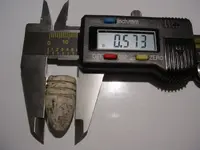
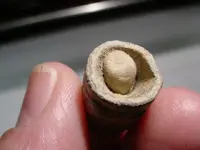
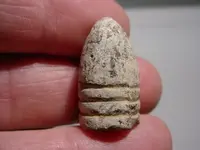



![Y507C[1].webp](/data/attachments/486/486912-1824ae78afceca7b7ab55083f1f003a6.jpg?hash=htkQrfpGWK)
![Y507A[1].webp](/data/attachments/486/486928-c65c69ac82517bf35860278ff67a93a6.jpg?hash=LavOWfn2vW)
![Y616B[1].webp](/data/attachments/486/486959-7d9dcce0571dc4db194d65f5c4884745.jpg?hash=8-QOqW9wXc)
![Y616C[1].webp](/data/attachments/486/486953-52e174b33dc416dcf0f49b7777906455.jpg?hash=ToUGtkEtIw)


 Yea I'm no civil war pro for sure.But I've handled plenty of bullet in my life.
Yea I'm no civil war pro for sure.But I've handled plenty of bullet in my life. ![Z40B[1].webp](/data/attachments/487/487023-50d235dd0a4def2a144f0cfb6bd614d9.jpg?hash=K-6fbt6-6W)
![MVC-060S[1].webp](/data/attachments/487/487012-90035e13ec21bbc5c4dce98344787ee0.jpg?hash=NUofQVbNhg)
![Z40B[1].webp](/data/attachments/487/487192-cc85239829bfe544a7fb1a23964deb38.jpg?hash=hkTY7DLaf7)
![MVC-060S[1].webp](/data/attachments/487/487197-cdd6cbf19e8cefb317c7bdde8b98a324.jpg?hash=me1hEdOVbP)
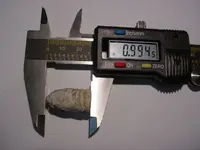
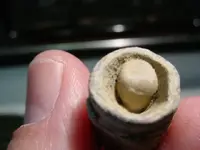
 But no Doug just want to learn as much as you do.
But no Doug just want to learn as much as you do. 
